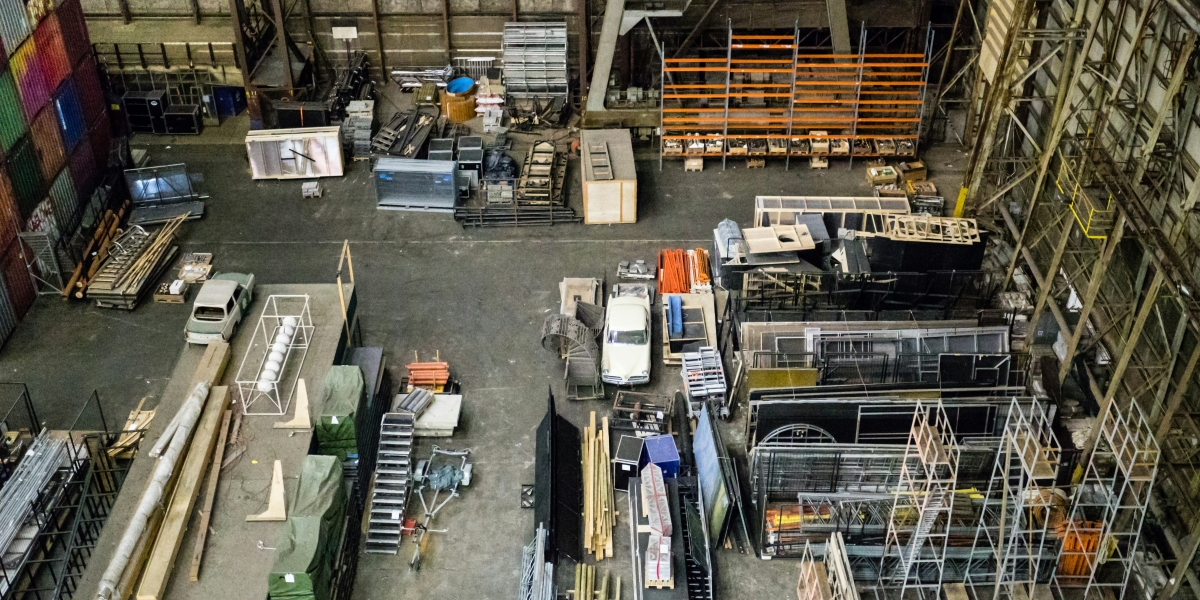By: Umair Malik
With hazardous liquids, even a small spill can result in significant damage to the environment. For workshops, warehouses, and industrial locations, good bunding and spill containment are not only required by legislation, but are also crucial aspects of corporate environmental responsibility.
Soil contamination, waterway pollution, and chemical runoff can lead to fines, clean-up expenses, and long-term reputational challenges. Effective containment systems aim to reduce these potential consequences by safely isolating spills before they can reach the environment.
The Environmental Impact of Industrial Spills
Industrial spills are among the more serious contributors to environmental pollution today. Even small amounts of hazardous materials can have significant consequences when introduced into ecosystems, potentially compromising soil health, water supplies, and wildlife habitats for long periods.
Soil pollution from chemical spills can result in long-lasting environmental effects that extend far beyond the location of the spill. Chemicals in the soil can persist for years, leaching into groundwater and impacting plant growth over broad areas. Heavy metals, petroleum products, and man-made chemicals can make soil unsuitable for farming or natural vegetation, leading to “dead zones” that require extensive cleanup efforts.
Industrial spills are also a significant source of water pollution with potentially severe environmental consequences. Surface water contamination can immediately destroy aquatic habitats, killing fish and other organisms and disrupting food chains. The longer-term effects of groundwater contamination can be even more damaging, as underground water sources may remain polluted for centuries, affecting drinking water supplies and farm irrigation.
Declining air quality is often associated with liquid spills, especially when volatile organic compounds evaporate from the spilled materials. Emissions can contribute to the formation of smog and respiratory illnesses in nearby communities. Toxic vapors emitted by certain chemicals can pose an immediate risk to both workers and surrounding communities.
Developing Sustainable Spill Prevention Systems
Preventing spills involves a combination of careful planning, containment facilities, operating practices, and employee training. The aim is to prevent spills from occurring in the first place, while also making sure that any spills that do occur are properly contained and managed.
Primary containment systems serve as the first line of defense against environmental contamination. These include well-designed storage tanks, piping systems, and transfer equipment that reduce the risk of leakage and spills. Regular maintenance and inspections of these systems are essential to catch potential issues before they lead to more serious environmental incidents.
Secondary protection through bunding systems offers backup protection in case primary containment systems fail. Properly designed bunding systems are capable of holding the full contents of large storage tanks or the combined contents of several smaller containers, preventing spilled materials from reaching the environment.
Tertiary containment systems, such as oil-water separators and treatment systems, provide an additional layer of protection by treating contaminated water before it is released from the facility. These systems are particularly important for facilities handling water-soluble contaminants or those located in high-rainfall areas.
Monitoring and detection systems help facilitate a rapid response to spills before they can cause significant damage to the environment. Sophisticated systems are capable of detecting leaks in real-time, triggering automatic containment measures, and alerting response teams. Early detection can significantly reduce the environmental impact of spills while minimizing cleanup costs.
Organic solvents present multiple environmental hazards due to their volatility, flammability, and potential toxicity. Many organic solvents are less dense than water and can form distinct layers in containment systems, which requires special considerations during system design. Vapor control systems may also be needed to prevent air contamination from confined solvents.
Interactions between different substances can create unforeseen environmental hazards. Spills involving multiple materials can trigger chemical reactions that create new risks or make cleanup more difficult. Containment systems are essential in managing these situations through appropriate segregation and material compatibility.
Regulatory Frameworks and Compliance Strategies
Environmental laws governing spill containment continue to evolve, typically becoming more stringent over time. It’s crucial for companies to stay informed about existing regulations and anticipate potential changes when implementing effective compliance measures.
Federal environmental protection authorities set baseline standards for spill containment, but these are often supplemented by municipal ordinances that introduce additional requirements. Businesses must make sure they meet the highest applicable standards, which can vary based on geographic location and industry.
Industry-specific regulations address the unique hazards posed by different types of operations. Chemical manufacturers, for example, face different challenges than gasoline distributors or food processing plants. Each industry has specific environmental risks associated with its operations and materials.
Permit conditions often include spill containment provisions that are more demanding than standard regulatory requirements. Companies must review all relevant permits to make sure their containment systems meet or exceed these conditions. Violations can lead to enforcement actions and potential facility closures.
Routine inspections and audits help make sure ongoing compliance with environmental regulations. Companies that operate in good faith and go beyond the minimum regulatory requirements can avoid penalties and show commitment to long-term environmental stewardship.
Technology Integration for Environmental Protection
Modern technology enables businesses to prevent and respond to environmental contamination in ways that traditional methods alone cannot match. Integrating advanced technologies with conventional containment systems creates comprehensive protection.
Remote monitoring systems provide continuous surveillance of storage and containment systems, detecting potential issues before they escalate into environmental incidents. These systems monitor liquid levels, pressure changes, and environmental conditions, alerting operators to any potential risks.
Automated response systems are designed to react instantly when a spill is detected, activating pumps, closing valves, or deploying additional containment measures. These systems can respond much faster than human operators, helping to prevent small leaks from becoming significant environmental disasters.
Predictive maintenance technologies enable businesses to detect equipment failures before they occur. By monitoring equipment condition and performance, these systems identify potential problems early and schedule maintenance to prevent unplanned downtime or spills. Proactive maintenance reduces both environmental hazards and maintenance costs.
Geographic information systems (GIS) can help facility managers assess environmental risks and optimize spill containment measures. These systems can model potential spill scenarios, identify vulnerable environmental areas, and help plan the placement of containment systems for maximum protection.
Real-time water quality monitoring systems can detect contamination in nearby bodies of water, enabling rapid intervention to minimize environmental damage. These systems also help businesses demonstrate their commitment to environmental compliance.
Future Trends in Environmental Protection
The field of environmental protection is rapidly evolving, with new technologies, regulations, and stakeholder expectations shaping the future of spill containment. Understanding these trends helps businesses prepare for future challenges and stay competitive in an increasingly eco-conscious market.
Regulatory harmonization is aimed at creating uniform environmental standards across borders, which could simplify compliance for businesses with multiple locations. However, this harmonization may also result in tighter standards as effective practices merge across industries.
Stakeholder expectations are increasingly focused on transparency and accountability. Companies are being asked to report their environmental performance and show continuous improvement in their environmental protection efforts.
Environmental Leadership Through Proactive Protection
Effective bunding and spill containment systems are more than just compliance tools—they demonstrate a company’s dedication to environmental responsibility and corporate social responsibility. As environmental performance becomes increasingly important to business success, these systems offer essential protection for both the environment and the company’s reputation.
By investing in effective spill prevention and containment measures today, companies can protect the environment, safeguard their communities, and create long-term competitive advantages that extend well beyond compliance.
Disclaimer: The information provided is for general informational purposes only and should not be construed as professional advice. Readers are encouraged to conduct their own research and consult with a professional before making any decisions based on the information in this article.









